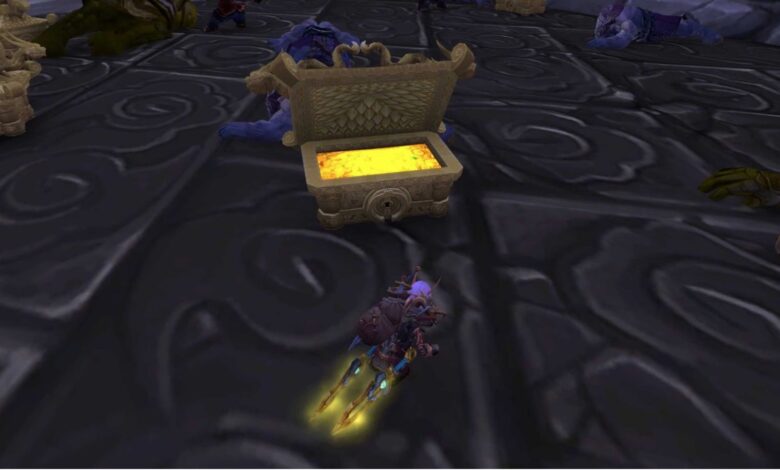The Economy of World of Warcraft: How Gold Drives the Game World
Share

World of Warcraft is not just a game; it is a whole world in which everyone needs gold to survive and make their way to success. Just like in real economies, virtual currencies in WoW dictate the rules of interaction between players. With little gold, it becomes hard to level up your character, indulge in raids, acquire special mount and other things, or develop professions. That’s why most players endlessly farm this resource to meet their in-game needs, while some even farm WoW gold for sale. But what is really behind this virtual currency? It is high time we looked closer at WoW’s economy and in particular how gold fuels the world in which everyone plays.
The Auction House: The Core of WoW’s Economy
One of the most important elements of WoW’s economy is the Auction House. It works as the demand-supply center and therefore acts as the common marketplace for trading in-game items. Experienced users employ such addons as Auctioneer for tracking changes in the price, scanning the market, and making some predictions. This tool enables players to create alerts that search for underpriced products to enable the players to buy and resell at a higher price. Timing plays a key role as well: many traders have noted opportunities to take advantage of such periods as after working hours and during the night. For most stocks, this means that there is less competition and when the prices go up they can make significant profits out of it by selling at these times.
However, the Auction House is not only controlled by players, but the bots also affect the market. These automated programs are always a case of constantly decreasing prices, flooding the list, and manipulating the market in a way that a natural trader endures difficulties in competing with such systems. Since bots can adapt to a price change in real-time, they can post and destabilize the economy by posting items at lower prices. Blizzard has been waging a war against botting for as long as it can remember, and it has used every trick in the book to rid its games of this scourge, and yet, botting remains a problem. However, the Auction House is still the core concentration of the game’s economy, defining the price for goods and gold, and influencing the experience of the game’s user.
Patches, Content, and Inflation
Usually, new patches and expansions will crank out major shifts in the World of Warcraft economy. Completely new professions changed how game mechanics work, new content can change the value of gold and items like crazy. As an example, if you introduce a new raid or dungeon that people need specific gear or potions to do then that can inflate the prices of crafting materials.
In a WoW economy, in-game inflation is a fascinating phenomenon. The longer players stay in the game, the more gold veteran players accumulate, leading to rising prices on the Auction House. For newcomers, this can be a challenge since basic items become less accessible. While veteran players, with their massive savings, can afford luxurious mounts and rare items, beginners struggle to farm gold or may consider buying it with real money.
Professions as the “Engines” of the Economy
Professions in the game not only help players earn gold, but they also have a significant impact throughout the entire in-game economy. For example: alchemists can earn money by creating potions for raids, jewelcrafters, and blacksmiths by crafting rare gear and trinkets for characters. Crafting professions have always been a mainstay of the game’s economy, and during an expansion’s peak, it’s a reliable way to make the bank.
One must understand that if a player decides to choose a profession it will affect the rate at which gold can be earned. crafting gear or resources benefit from the high demand. However, over time, these professions can become less profitable as the market becomes saturated. It thus sets up a kind of dynamic in the game economy, with professions pushing the main processes for the market, because they are the main engine of the market.
Social Aspects of the Economy: Guilds, Boosting, and Cooperation
Social interactions in WoW also have a major role in the economy. It is very common for guilds to become a hub with a base of cooperation for sharing resources, helping each other in raids, and organizing activities together. Internally, within guilds, there are frequently these markets set up where players are trading resources at friendly prices.
There’s also another cooperative aspect of the economy, known as boosting, where experienced players assist less experienced ones in exchange for gold or other resources. Many players are willing to pay for help in completing difficult content, making boost one of the key factors in social interaction within the game. Common boosting includes:
- Power Leveling — A service where an established player very quickly nets a character up to Level.
- Raids Boosts — A service where an established player guides you through completing a tough raid encounter so that you can plunder better loot.
- PvP Boosts — A service that helps people get higher ranks in competitive arenas or battlegrounds.
These services not only help newcomers progress more rapidly but also create a vibrant marketplace where experienced players can monetize their skills and knowledge of the game.
Conclusion
The economy of World of Warcraft is not just a system of in-game trade, but a fully-fledged model that influences player behavior and development. Gold in the game is much more than just currency: it forms an entire ecosystem where everything—from the Auction House to guilds and boosting—revolves around managing and distributing resources. Understanding WoW’s economy offers deeper insights into how the balance between players is maintained over the years and which mechanisms impact a character’s success in this virtual world.







